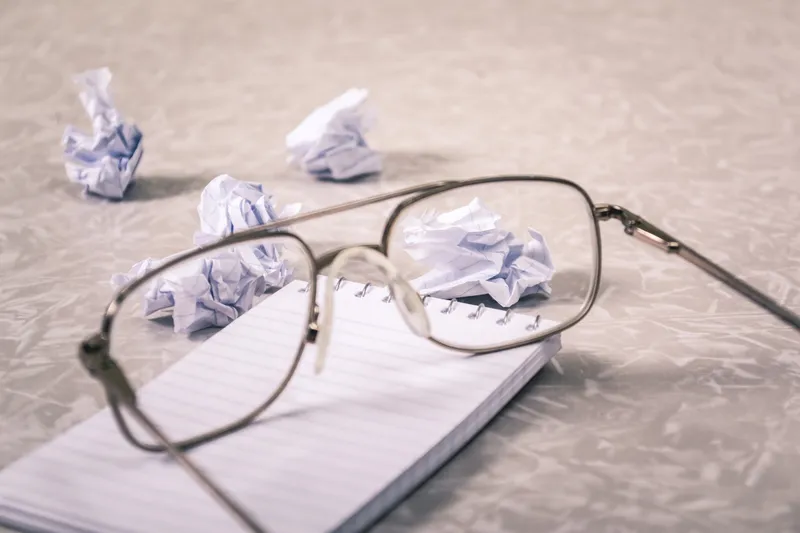Exhausted and Unproductive? This Might Help
Use your natural ebbs and flows to get stuff done.
26 Sept 2018

As a kid, I never understood why adults were so slow. Surely it would be more natural to run around and bounce and clamber – what was wrong with them? Why were all adults so lazy?!
Now I’m (allegedly) an adult, I get it: We’re not lazy… we’re just exhausted.
That seemingly infinite energy just isn’t there anymore. Inspiration comes and goes as it pleases, and it’s hard to predict whether I’ll wake up and feel like climbing a mountain, or if today I won’t make it out of the house.
Even worse… it turns out adults are supposed to use this highly unpredictable energy supply to actually get things done.
(I can’t help but think that a more sensible design for humans might have made the children lethargic and the adults energetic, so it’d both be easier to look after the kids and adults could be more productive. But I digress…)
For a long time, I saw it as a frustrating fact of life that each day was a lottery. Perhaps I’d be full of motivation and would write 5000 words, or a song, or find a bunch of new clients to code websites for. Or perhaps I’d fritter the day away fruitlessly tapping at a keyboard without achieving very much at all.
But last year I came across an awesome idea by Naomi Dunford which changed the way I relate to these energy fluctuations entirely.
Don’t Fight It…
In Naomi’s original post (which I absolutely recommend reading), she says that high energy days—“flow days”—and low energy days—“ebb days”—are simple facts of life, and we’re better of accepting them than fighting them. She compares attempting creative work on an ebb day to someone insisting on going to the beach on a freezing cold winter’s day.
Her recommendation is incredibly simple: save low-energy tasks for low-energy days, and high-energy tasks for high-energy days.
When I heard this, something clicked into place for me. Previously, I’d treat a low-energy day as if I had personally failed. I’d imagine that everybody else in the world was successfully powering through their to-do list while I failed to dent mine. Naturally, this self-criticism only made it harder to get anything done… which further fed the negative cycle.
It’s freeing to treat ebb days as an inevitable fact of life, like the weather, rather than as an indication that there’s something wrong with me. Even better - working with the ebbs and flows means I can get a lot done no matter which kind of day it is.
Make a List of “Ebb Tasks” and “Flow Tasks”
In practice, this means keeping a list of “ebb tasks” and “flow tasks”. Flow tasks require creativity and energy, while ebb tasks are busywork: replying to emails, data entry, mindless editing, chores, etc.
Most mornings I begin by attempting whichever “flow task” is my current highest priority. If it goes well, great! I make progress on my highest priority.
But if it becomes obvious that I’m struggling, I allow myself to acknowledge that it might just be one of those days when I physically can’t do anything creative. Instead of insisting on sitting on the snowy beach, I immediately switch over to my ebb task list and start on whichever chore feels most doable.
This means I still get something done, no matter how I feel. Occasionally this even triggers a feeling of accomplishment, which gives me the inspiration I need to switch back to the trickier flow task.
If Possible, Save Busywork for Ebb Days
Importantly, implementing this system requires resisting the temptation to spend precious energy on busywork.
On those rare mornings when I wake up brimming with creativity, I’m often tempted to knock out a bunch of little tasks before I start on the major project of the day. It feels like a good idea to clear out my inbox, do some laundry, and clean my office before I get started, but I have to remember that I could do those jobs anytime.
If I can, I’d rather save ebb tasks for a day when I can’t do anything else.
There’s Never a Single Solution
Of course, this technique doesn’t solve every problem, but I’ve found it to be a useful tool. (It’s also worthwhile trying to create better conditions for having more flow days, by doing things like getting enough sleep, eating well and physical activity.)
No matter what we do, we don’t get to live with a boundless supply of infinite energy, and there will always be times when we must delve deep into our reserves. I hope this idea helps you use your reserves more effectively.
This article was originally written for Puttylike

Neil Hughes is the author of Walking on Custard & the Meaning of Life, a comical and useful guide to life with anxiety, and The Shop Before Life, a tale about a magical shop which sells human personality traits.
Along with writing more books, he spends his time on standup comedy, speaking about mental health, computer programming, public speaking and everything from music to video games to languages. He struggles to answer the question "so, what do you do?" and is worried that the honest answer is probably "procrastinate."
He would like it if you said hello.